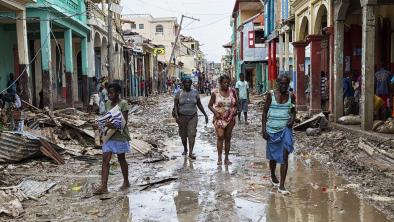Science Source
Rapid intensification and the bimodal distribution of tropical cyclone intensity
- Shows that the most intense storms are those that undergo rapid intensification during their lifetime and that tropical cyclones which undergo rapid intensification are responsible for extreme storms being more frequent than expected
- States that the severity of a tropical cyclone (TC) is often summarized by its lifetime maximum intensity (LMI), and the climatological LMI distribution is a fundamental feature of the climate system
- States that the distinctive bimodality of the LMI distribution means that major storms (LMI 496 kt) are not very rare compared with less intense storms
- States that rapid intensification (RI) is the dramatic strengthening of a TC in a short time, and is notoriously difficult to forecast or simulate
- Shows that the bimodality of the LMI distribution reflects two types of storms: those that undergo RI during their lifetime (RI storms) and those that do not (non-RI storms)
- Finds the vast majority (79%) of major storms are RI storms and that few non-RI storms (6%) become major storms
- States that while the importance of RI has been recognized in weather forecasting, our results demonstrate that RI also plays a crucial role in the TC climatology
Related Content
Headline

Nov 10, 2016 | Reuters
Living in the aftermath of Hurricane Matthew
Headline

Nov 8, 2016 | Financial Times
A 19th century plague revived in an age of climate change
Headline

Nov 7, 2016 | Robert Scribbler
Dangerous Hurricane Matthew Strengthens in Record Hot Environment
Headline

Nov 7, 2016 | KRQE via Associated Press
Hurricane Matthew brought town’s demise, needs a ‘miracle’


